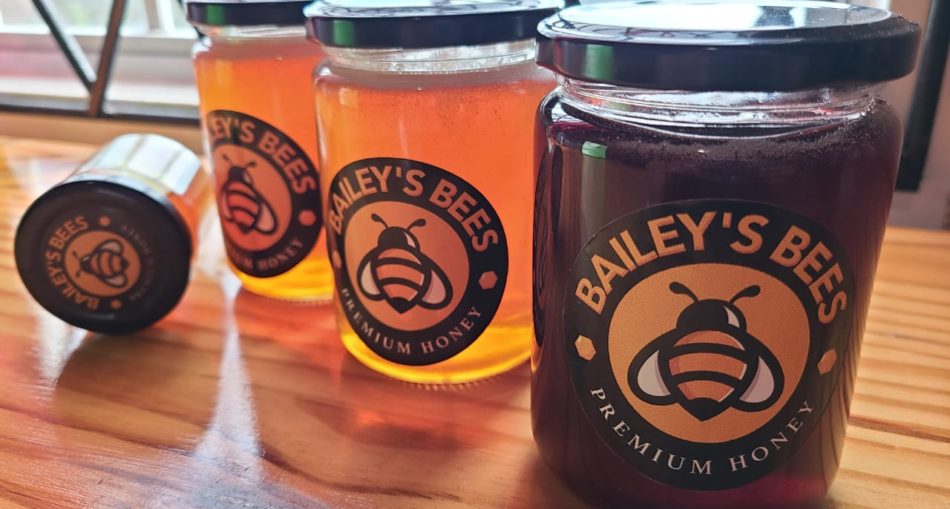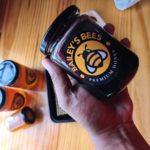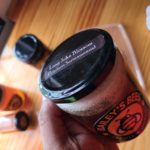Honey is one of the oldest foods known to man and even used in medicine and worship. Honey is also known as ‘food of the gods’ and ‘liquid gold’ due to its numerous properties and uses. There are several types of honey including floral, blended, monofloral, polyfloral and honeydew. The type and colour of Honey produced depend on the type of flower the nectar is obtained from. Locally, Honey is added to hair food, lip balm, soaps, candles, shoe polish, even wine. Honey is also used to make a popular local snack, honey-roasted peanuts.
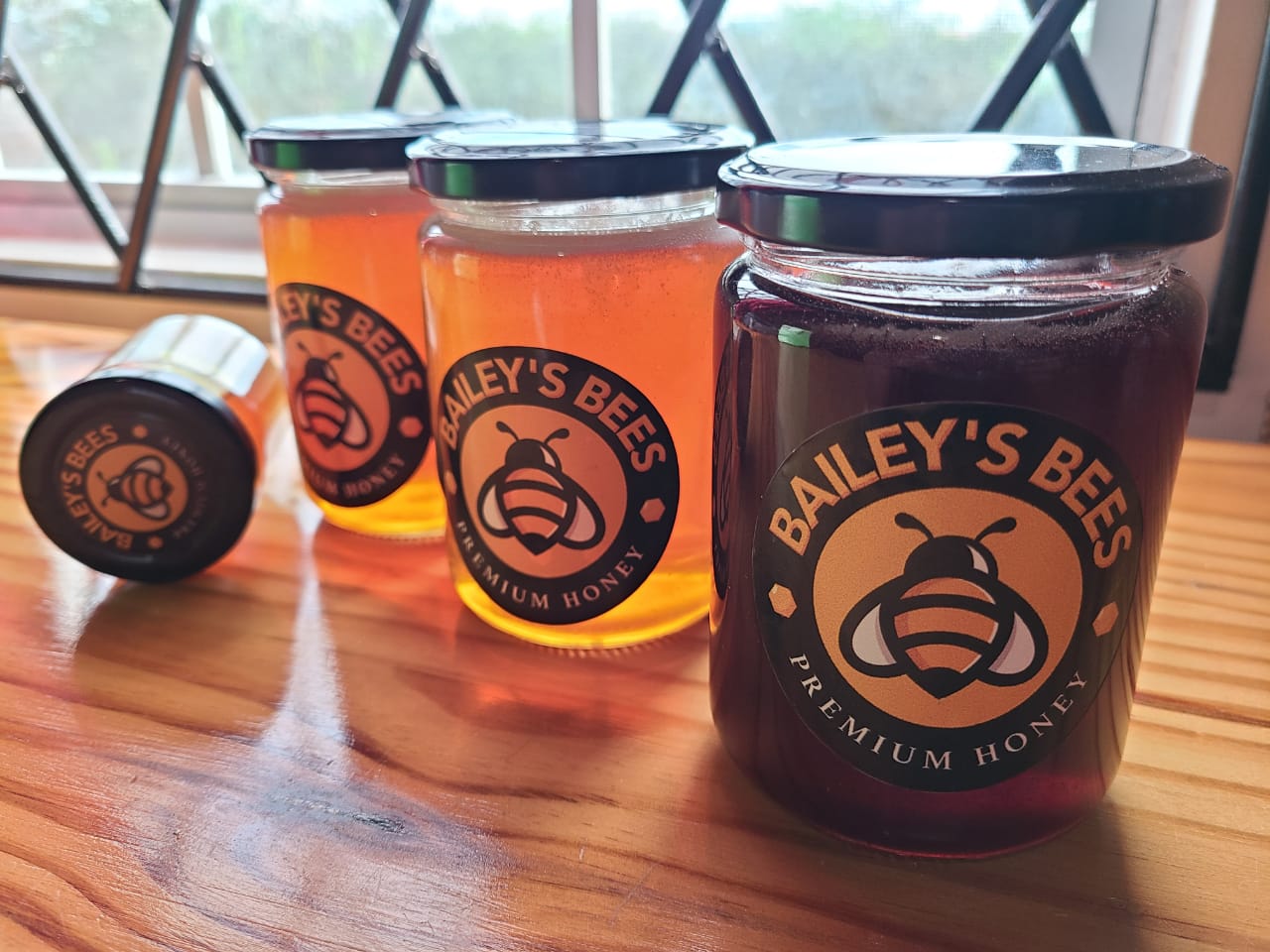
Jars of Honey – Photo By Girendra Persaud
What is Honey?
Honey is a viscous, liquid typically made from the nectar of flowers by bees. The sweet substance is often golden or yellow-brown in colour. Honey begins as the nectar collected from flowers. The nectar is then broken down into simple sugar and is stored within honeycombs. Due to the beating to the bees’ wings, and the structure of the honeycomb itself, evaporation occurs and honey is created. After extraction, Honey is trained to removed unwanted particles like wax. Sometimes the substance is heated before bottling.
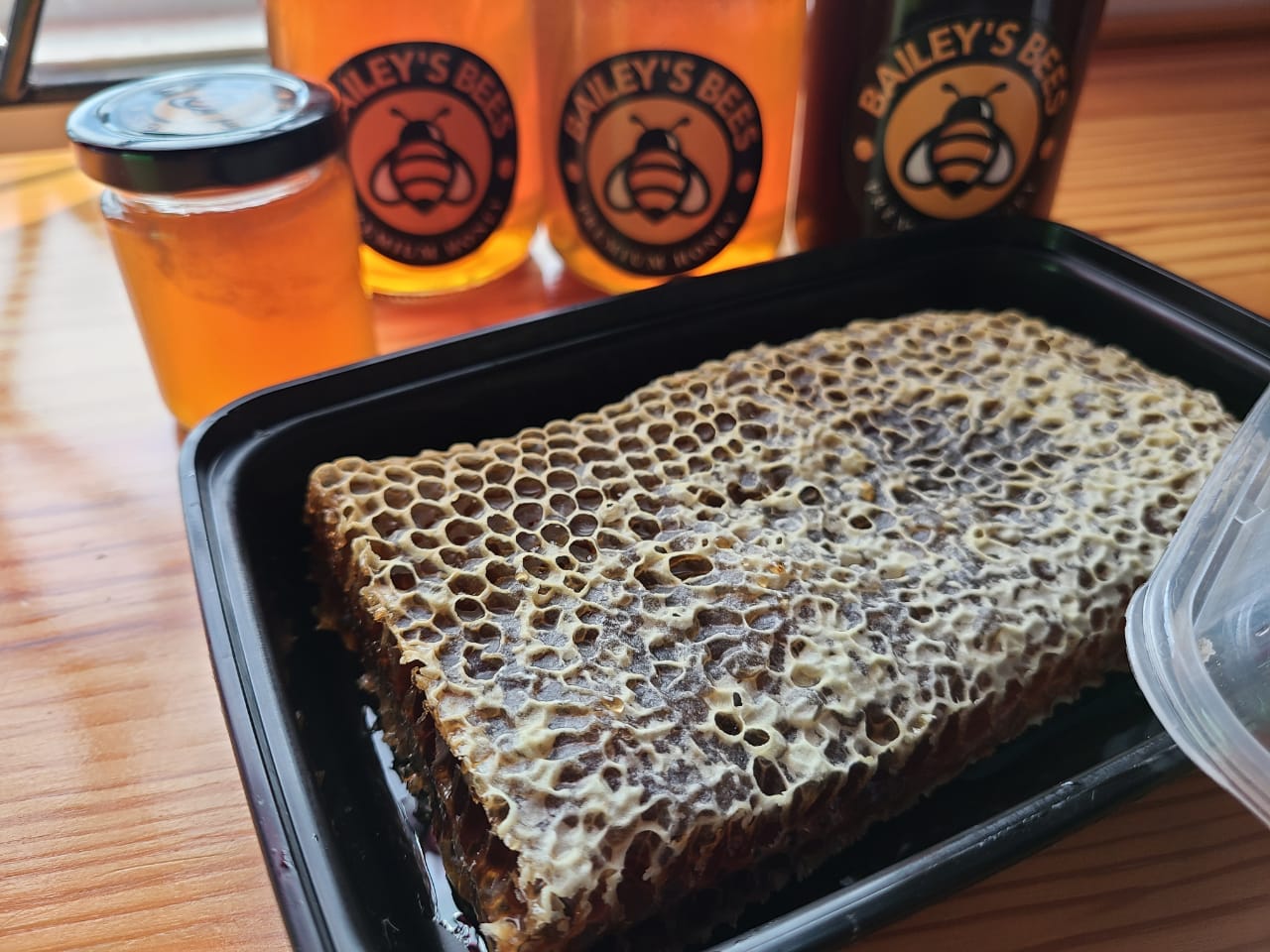
Honeycomb – Photo By Girendra Persaud
Types of Honey
Honey can be divided into classes based on its sources. The sweetening substance is graded on the Pfund scale starting at zero (0) white water honey to as much as one hundred and fourteen (114) for dark amber honey.
- Floral – This is the type of honey obtained from a specific flower.
- Blended – Honey obtained from different flowers can be blended. They are usually from two or more different types of flowers and vary in colour, thickness and even regions of origin.
- Monofloral – As the name suggests, the monofloral honey is made from a single type of flower. Honey can be made from flowers such as orange blossom, clover, sunflower, lavender, buckwheat, dandelion, cotton, yellow box, ironbark, sage, thyme and fireweed.
- Polyfloral – Otherwise known as wildflower honey, it is made from a combination of flower nectar with the flavour varying since the honey is obtained from various flowers in bloom, depending on the season.
- Honeydew – Sometimes called myelate, this dark brown honey is obtained from the sweet secretions of aphids or other plant-sap-sucking insects. The bees take honeydew instead of nectar to produce honey which has a sugary scent of jam.
- Honey – Photo By Girendra Persaud
- Honey – Photo By Girendra Persaud
- Honey – Photo By Girendra Persaud
Nutrition Facts Of Honey
One (1) tablespoon of honey which is equivalent to twenty-one (21 grams contains sixty-four (64) calories, seventeen (17) grams of sugar (fructose, glucose, maltose and sucrose).
5 Health Benefits of Honey
- Rich in Antioxidants – Organic acids and phenolic compounds such as flavonoids among other important antioxidants can be found in good quality honey. Antioxidants can help to lower blood pressure. Buckwheat honey can help increase the antioxidant value of your blood.
- May help with Diabetes – Honey can decrease risk factors for heart disease common in people with type 2 diabetes by lowering bad cholesterol (LDL) and raise good cholesterol (HDL). However, it is believed to increase sugar levels in the blood though not as much as refined sugar. Evidence of Honey and diabetes is conflicting.
- Fastens Healing of Wounds and Burns – Honey, especially Manuka honey in topical treatment effectively heals infected partial-thickness burns and wounds.
- Helps with Coughs – Honey is used to soothes coughs in children with respiratory infections and in some cases more effective than common cough medications.
- Reduces weight – Honey can help to reduce weight as calories with its balance of nutrients.
Culinary Uses Of Honey
- Honey is typically used in baking.
- It is also a spread on bread.
- Honey has been added to a number of beverages including teas and mead.
- Additionally, it has been used as a sweetener.
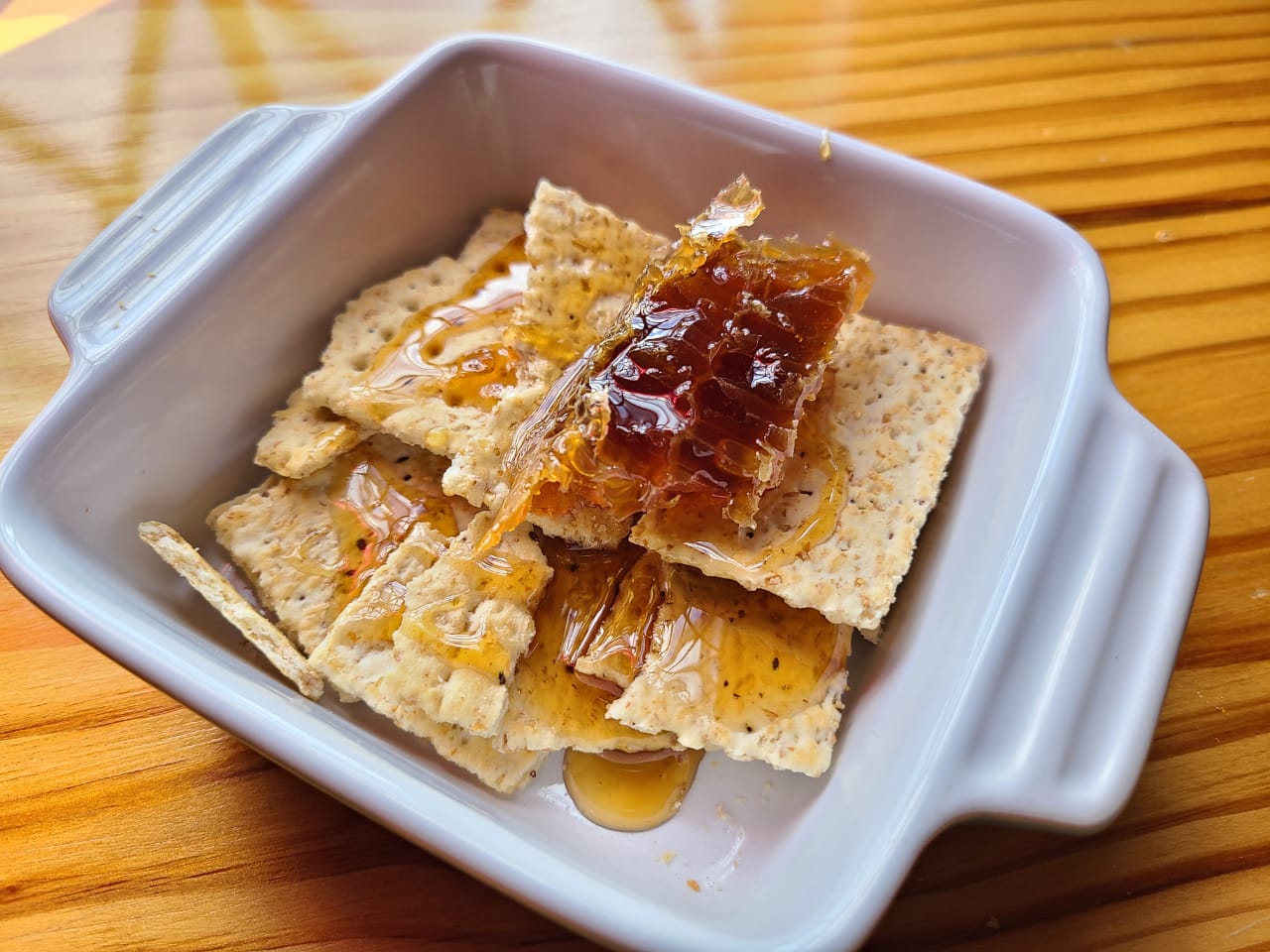
Honey on Crackers Photo By Girendra Persaud
Other Uses Of Honey
- In folk treatment, the substances used to treat burns and skin injuries. It is believed that honey hastens healing but there is no concrete evidence.
- Honey has antibiotic qualities and practitioners of traditional and herbal medicine use it as a topical antibiotic.
- In Guyana, a mixture of Honey and lime juice has been used to treat coughs.
- It also helps to treat other skin conditions such as psoriasis and herpes lesions.
Interesting Tip
- The favourite food of Hadza people of northern Tanzania is honey because of its energy content.
- Mead, known as honey wine dates back to 9000 years and is believed to be the oldest fermented drinking in the world.
- The Greeks and Egyptians used honey topically and orally to treat illnesses such as ulcers, skin wounds and gastric disturbances.
- Honey is also used in Ayurveda and traditional Chinese medicine.
About Honey
Honey has a number of health benefits due to its antioxidant qualities and its dynamic ability to help heal wounds and burns. It is used around the world as a sweetening ingredient in many foods and beverages and is a much healthier option than sugar.
Article Reference
- https://en.wikipedia.org/wiki/Honey
- https://www.healthline.com/nutrition/10-benefits-of-honey#TOC_TITLE_HDR_4
- https://www.medicalnewstoday.com/articles/264667#benefits
- https://www.healthifyme.com/blog/benefits-of-using-honey-for-weight-loss/
- https://guyanachronicle.com/2019/08/25/honey-got-money/
- https://newsroom.gy/2018/01/25/guyana-pursuing-increased-honey-production/
- https://honey.com/about-honey/how-honey-is-made#:~:text=Made%20Naturally%20by%20Nature&text=Honey%20starts%20as%20flower%20nectar,evaporation%2C%20creating%20sweet%20liquid%20honey.
Last Updated: 2021-02-27

